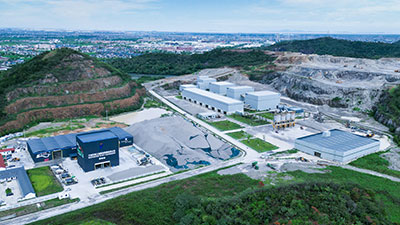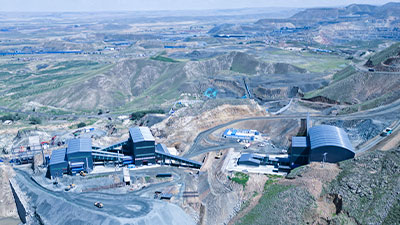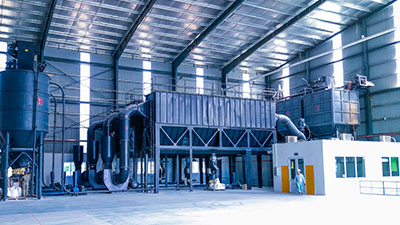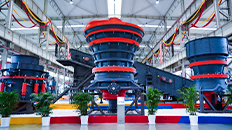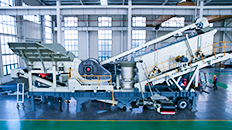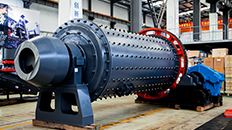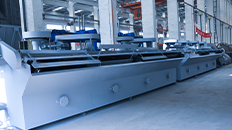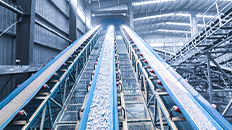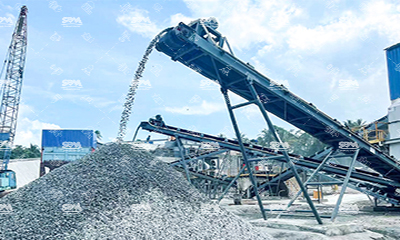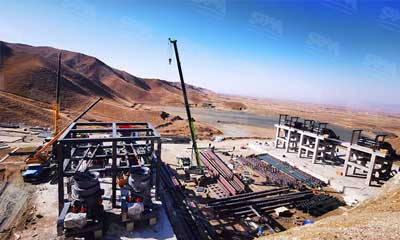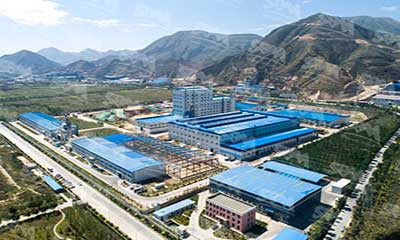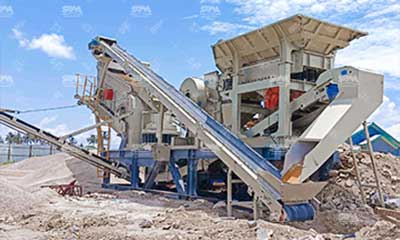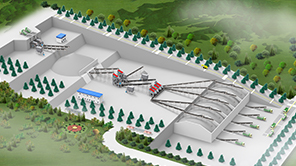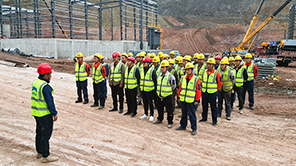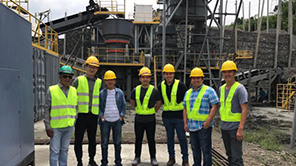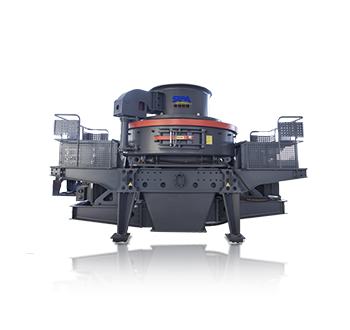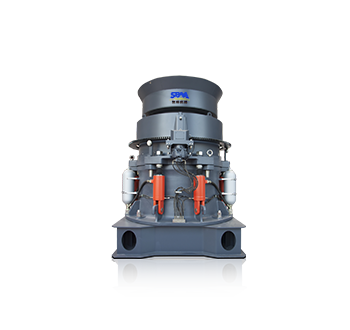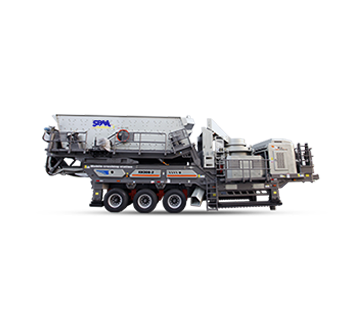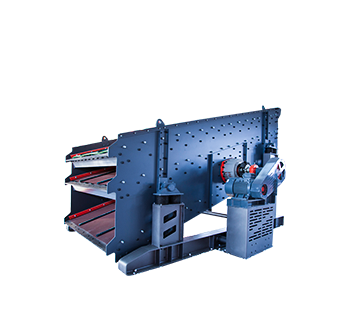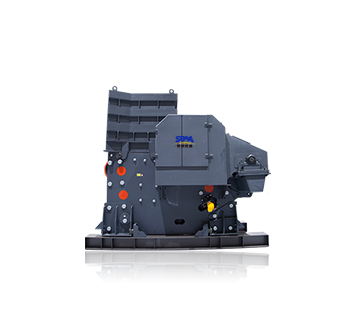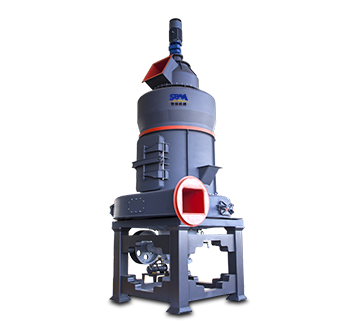Summary:Compare jaw & cone crushers for limestone crushing: key factors like feed size, product specs & costs to optimize your operation's efficiency.
Limestone is a widely used sedimentary rock in various industries, including construction, cement production, and aggregate manufacturing. When choosing between a cone crusher and a jaw crusher for crushing limestone rock, understanding their advantages and disadvantages is key to selecting the right equipment for your needs. Limestone is a relatively soft rock (Mohs hardness 3-4), so both crushers can handle it, but their performance, output characteristics, and operational considerations differ significantly.

1. Limestone Characteristics and Crushing Objectives
- Hardness & Abrasion: Limestone typically has a Mohs hardness of 3–4, making it relatively soft but still abrasive enough to wear on crusher liners.
- Feed Size: Quarry run limestone can range from boulders of over 1 m down to friable fines.
- Desired Product: Applications may require coarse aggregate (e.g., 20–40 mm), fine aggregate (e.g., 5–20 mm), or finely ground limestone powder (< 2 mm).
The crusher choice should align with these parameters: reliable feed size reduction, adequate capacity, acceptable product shape, and minimal wear costs.
2. Jaw Crusher: Primary Crushing Workhorse
Advantages:
1. Simple Design and Operation:
Jaw crushers have a straightforward design, which makes them easy to operate and maintain. They typically require less complex training for operators.
2. Effective for Coarse Crushing:
Jaw crushers are highly effective for primary crushing of large, hard materials. They can handle larger feed sizes compared to cone crushers.
3. High Reduction Ratio:
They can achieve a significant reduction ratio, making them effective for breaking down larger limestone rocks into smaller sizes.
4. Robust Construction:
Jaw crushers are built to withstand heavy loads and are durable, making them suitable for tough crushing applications.
5. Lower Initial Cost:
Generally, jaw crushers have a lower initial purchase cost compared to cone crushers, making them more accessible for smaller operations.
Disadvantages:
1. Limited Fine Crushing Ability:
Jaw crushers are not as efficient for producing fine aggregates. The final product may have a more angular shape and larger size distribution.
2. Higher Wear on Jaw Plates:
The wear on jaw plates can be significant, especially when dealing with abrasive materials like limestone, leading to more frequent replacements.
3. Lower Throughput:
Compared to cone crushers, jaw crushers usually have a lower throughput, which can be a limitation in high-volume applications.
4. Less Efficient for Secondary Crushing:
While effective for primary crushing, jaw crushers are generally less efficient than cone crushers for secondary or tertiary crushing applications.
3. Cone Crusher: Secondary & Tertiary Crushing
Advantages:
1. High Efficiency and Throughput:
Cone crushers are designed for high efficiency and can achieve a greater throughput compared to jaw crushers, making them suitable for high-volume operations.
2. Good for Fine Crushing:
They excel in producing finer materials and can create a more uniform product size, which is beneficial for applications requiring specific aggregate sizes.
3. Adjustable Product Size:
Cone crushers allow for easy adjustment of the product size through the use of a hydraulic system, enabling more control over the output.
4. Less Wear on Components:
Due to their design, cone crushers often experience less wear on internal components compared to jaw crushers, leading to lower maintenance costs over time.
5. Better for Secondary and Tertiary Crushing:
Cone crushers are more effective for secondary and tertiary crushing stages, particularly in producing high-quality aggregates.
Disadvantages:
1. Higher Initial Cost:
Cone crushers typically have a higher initial purchase price compared to jaw crushers, which can be a consideration for budget-conscious operations.
2. More Complex Maintenance:
Maintenance can be more complex and may require specialized training, tools, and parts, leading to potentially higher operational costs.
3. Less Effective for Large Rocks:
Cone crushers are generally not as effective for primary crushing of very large limestone rocks, as they have a smaller maximum feed size compared to jaw crushers.
4. Sensitivity to Feed Size:
Cone crushers can be sensitive to the size and consistency of the feed material. Feeding oversized material can lead to operational issues.

4. Comparison Summary for Limestone Crushing
| Aspect | Jaw Crusher | Cone Crusher |
|---|---|---|
| Best Use | Primary crushing, coarse output | Secondary/tertiary crushing, fine output |
| Output Size | 50-300 mm (coarse) | 5-50 mm (fine, cubical) |
| Product Shape | Flaky, less uniform | Cubical, highly uniform |
| Cost | Lower purchase/maintenance | Higher purchase/maintenance |
| Wear on Limestone | Moderate (abrasive traces increase wear) | Low (soft limestone minimizes wear) |
| Energy Efficiency | Better for coarse crushing | Higher consumption for fine crushing |
| Feed Size | Handles large blocks (up to 1.5m) | Limited to smaller feed (<300 mm) |
| Moisture Sensitivity | Handles wet/sticky material well | Prone to clogging with wet/sticky limestone |
5. Additional Considerations
- Maintenance Planning: Stock wear parts (jaw plates, cone liners) to minimize downtime. Limestone is less abrasive than hard rock, but regular inspections are still essential.
- Dust Control: Implement water sprays or dust collectors, as limestone generates significant dust during crushing.
- Flexibility Needs: If feed size or product requirements vary, a hybrid setup (Jaw + Cone) provides the best adaptability.
6. Practical Recommendations
For Small-Scale or Budget-Conscious Operations
Primary: Jaw Crusher (for initial size reduction).
Secondary (if needed): Impact Crusher (cost-effective alternative to cone crushers).
For High-Quality Aggregate Production
Primary: Jaw Crusher (for coarse output).
Secondary/Tertiary: Cone Crusher (for well-shaped, fine aggregates).
For Large-Scale Quarries
Optimal Setup: Jaw Crusher (primary) + Cone Crusher (secondary/tertiary).
Benefits: Maximizes throughput, reduces recirculation load, and improves final product quality.
Choose a Jaw Crusher if your priority is primary crushing of large limestone rocks with lower initial cost and simpler operation.
Choose a Cone Crusher if you require fine, high-quality aggregates with better particle shape control and lower long-term operating costs.
For optimal limestone processing, a combination of jaw and cone crushers often provides the best balance between cost-efficiency, product quality, and operational flexibility.

